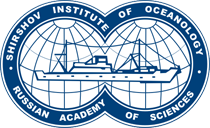Scientific Head Marine Ecology Direction
Head of Laboratory
DSc (Biological Sciences)
Academician of RAS
Plankton Ecology Laboratory
Marine Ecology
36, Nakhimovskiy prospect, Moscow, 117997, Russia
Phone: (499)124-85-15
* Required fields
Bio-Oceanologist, DSc (Biological Sciences) (2005), Academician of the RAS (2019), Deputy Director of IO RAS (1997-2019), since 2003 - Head of the Plankton Ecology Laboratory.
In 1972 he graduated from the Department of Hydrobiology of the Faculty of Biology of Moscow State University, which was headed by Corresponding Member of the USSR Academy of Sciences V.G. Bogorov. He came to the Institute of Oceanology in 1970, even before graduating from Moscow State University, and was preparing a thesis on zooplankton in the tropical zone of the ocean based on the materials of expeditions of the Institute of Oceanology of the Academy of Sciences.
In 1981 he defended his Ph.D. thesis on the structural features of plankton communities in highly productive areas of the ocean, in 2005 he defended his doctoral thesis on the topic "The role of shelf fronts in the formation of biological productivity."
Scientific interests are related to the study of the structure and productivity of pelagic ecosystems of the seas and oceans and their variability under the influence of climate and anthropogenic load.
The main areas of research are the interaction of physical and biological processes in the ocean; mesoscale processes in pelagic ecosystems and their role in the formation of biological productivity; biological phenomena associated with hydrophysical fronts and their contribution to ocean productivity; processes in the area of the continental margin of the ocean and their influence on the interaction between the ecosystems of the shelf and the deep sea.
Member of 14 large marine expeditions on ships of the IO RAS and foreign scientific institutions to the Pacific, Indian and Southern Oceans, the Black, Mediterranean and Bering Seas. In a number of expeditions, he was the head of scientific programs.
Works in the area of the eastern boundary currents of the Pacific Ocean and the Subantarctic (1974–1989) made it possible to obtain new ideas about the influence of the hydrophysical fronts of the open ocean and the area of the continental slope on the structure of plankton communities, as well as to reveal the regularities in the quantitative distribution of mesoplankton in coastal upwelling areas.
In studies carried out in the Eastern Pacific and the Arabian Sea, fundamental ideas were obtained about the relationship between the distribution of plankton and conditions of deep oxygen deficiency in the global oxygen minimum of the ocean, and the physiology of mass species, which determine their different resistance to low oxygen concentrations in the environment, was elucidated.
In 1985–1986 organizes expeditions to the Black Sea aimed at studying the processes in the area of contact between the oxygen and hydrogen sulfide zones, in which the Argus underwater manned vehicle is used for observations and targeted sampling. As a result, information was obtained on the fine vertical structure of pelagic communities in the lower part of the aerobic layer, which determines the possibility of involving chemosynthesis products in pelagic food webs (together with M.E. Vinogradov).
In 1992–1995 Head of the Russian-American project on regional bio-oceanology in the Bering Sea. The result of these studies was original work that reveals the mechanisms of the influence of various types of shelf hydrophysical fronts on the productivity of pelagic ecosystems.
Since 1999, he has been heading the Black Sea Ecosystem Comprehensive Research Program, which is being conducted by the Institute of Oceanology jointly with institutes of the Russian Academy of Sciences and other departments. These studies made it possible to obtain fundamental and applied insights about the relationships between hydrophysical and biological processes in the Black Sea ecosystem, as well as to assess the mechanisms and speed of the modern evolution of the Black Sea ecosystem under the influence of climate and anthropogenic factors.
Engaged in the development of new methods of field biooceanological research. Created by him together with M.V. Geptner and A.G. Timonin electronic closure of planktonic networks made it possible to obtain fundamentally new data on the fine vertical structure of plankton communities in the surface layer of the ocean and mesopelagial and its relationship with the physical and chemical conditions of the environment.
Member of the editorial boards of the journals "Oceanology" and "Biology of Inland Waters", a member of international working groups for the study of marine ecosystems in the Arctic and the Bering Sea.
Author of 120 scientific papers.




